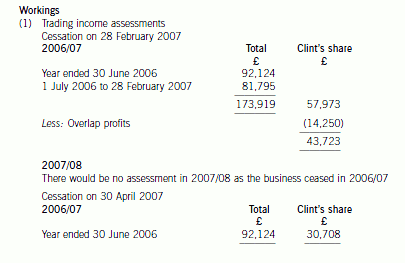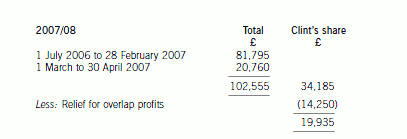本篇文章为你详细解答!ACCA准会员如何申请成为会员
发布时间:2020-02-21
我们都知道考完ACCA全科的可以正式成为ACCA准会员,但是要想成为ACCA持证会员仅仅通过考试是不行的。今天51题库考试学习网就来简单说一下ACCA准会员想要申请成为ACCA会员需要的条件,快来关注吧!
ACCA准学员:13科全部通过的学员。
ACCA会员:13科全部通过,完成道德测试并且至少有3年相关工作经验(相关工作经验指的是你从事财务、会计、审计、税务或者金融任一方面的工作经验)的ACCA准会员即可申请成为会员。
成为会员的必要条件:根据2007年1月1日开始实行的新大纲,成为ACCA会员的必要条件是要完成"三个E"(Exams,Ethics and practical
Experience),
具体包括:
(1)通过ACCA专业资格大纲13门课程的考试(其中9门根据学员的教育和专业背景可申请不同程度的免试);
(2)至少三年的相关工作经验;
(3)完成职业道德测试。对在2007年1月1日之前注册的学员,完成在线职业操守训练课程不作为申请会员的必要条件,但ACCA鼓励学员完成这一课程。
如何申请成为会员?
(1)ACCA每年2月份和8月份会分别公布上一年12月份和本年6月份的考试成绩。每一个通过ACCA全部考试的学员随后会收到ACCA英国总部颁发的ACCA准会员证书,以确认学员成功通过所有考试。
(2)符合会员的必要条件"3E"的准会员可以填写《ACCA会员申请表》。《ACCA会员申请表》可以直接登陆ACCA网站下载。对于暂时未满足会员的必要条件的准会员,可以在条件满足的任何时间向ACCA递交ACCA会员申请表;
(3)ACCA总部将对会员申请材料进行审核,完全符合条件者将被批准成为ACCA会员,并会收到ACCA英国总部颁发的ACCA会员证书。一般这个过程需要两个月的时间;
(4)成为会员约五年后,经申请和资格审查,可以成为资深会员(FCCA)。
愉快的时光总是很短暂,以上就是今天51题库考试学习网为大家分享的全部内容,如果大家还有什么疑问,欢迎大家前来咨询51题库考试学习网,我们会第一时间为大家答疑解惑。
下面小编为大家准备了 ACCA考试 的相关考题,供大家学习参考。
(ii) Analyse the effect of delaying the sale of the business of the Stiletto Partnership to Razor Ltd until
30 April 2007 on Clint’s income tax and national insurance position.
You are not required to prepare detailed calculations of his income tax or national insurance liabilities.
(4 marks)
(ii) The implications of delaying the sale of the business
The implications of delaying the sale of the business until 30 April would have been as follows:
– Clint would have received an additional two months of profits amounting to £6,920 (£20,760 x 1/3).
– Clint’s trading income in 2006/07 would have been reduced by £13,015 (£43,723 – £30,708), much of which
would have been subject to income tax at 40%. His additional trading income in 2007/08 of £19,935 would all
have been taxed at 10% and 22%.
– Clint is entitled to the personal age allowance of £7,280 in both years. However, it is abated by £1 for every £2
by which his total income exceeds £20,100. Once Clint’s total income exceeds £24,590 (£20,100 + ((£7,280
– £5,035) x 2)), his personal allowance will be reduced to the standard amount of £5,035. Accordingly, the
increased personal allowance would not be available in 2006/07 regardless of the year in which the business was
sold. It is available in 2007/08 (although part of it is wasted) but would not have been if the sale of the business
had been delayed.
– Clint’s class 4 national insurance contributions in 2006/07 would have been reduced due to the fall in the level
of his trading income. However, much of the saving would be at 1% only. Clint is not liable to class 4 national
insurance contributions in 2007/08 as he is 65 at the start of the year.
– Changing the date on which the business was sold would have had no effect on Clint’s class 2 liability as he is
not required to make class 2 contributions once he is 65 years old.


3 (a) Financial statements often contain material balances recognised at fair value. For auditors, this leads to additional
audit risk.
Required:
Discuss this statement. (7 marks)
3 Poppy Co
(a) Balances held at fair value are frequently recognised as material items in the statement of financial position. Sometimes it is
required by the financial reporting framework that the measurement of an asset or liability is at fair value, e.g. certain
categories of financial instruments, whereas it is sometimes the entity’s choice to measure an item using a fair value model
rather than a cost model, e.g. properties. It is certainly the case that many of these balances will be material, meaning that
the auditor must obtain sufficient appropriate evidence that the fair value measurement is in accordance with the
requirements of financial reporting standards. ISA 540 (Revised and Redrafted) Auditing Accounting Estimates Including Fair
Value Accounting Estimates and Related Disclosures and ISA 545 Auditing Fair Value Measurements and Disclosures
contain guidance in this area.
As part of the understanding of the entity and its environment, the auditor should gain an insight into balances that are stated
at fair value, and then assess the impact of this on the audit strategy. This will include an evaluation of the risk associated
with the balance(s) recognised at fair value.
Audit risk comprises three elements; each is discussed below in the context of whether material balances shown at fair value
will lead to increased risk for the auditor.
Inherent risk
Many measurements based on estimates, including fair value measurements, are inherently imprecise and subjective in
nature. The fair value assessment is likely to involve significant judgments, e.g. regarding market conditions, the timing of
cash flows, or the future intentions of the entity. In addition, there may be a deliberate attempt by management to manipulate
the fair value to achieve a desired aim within the financial statements, in other words to attempt some kind of window
dressing.
Many fair value estimation models are complicated, e.g. discounted cash flow techniques, or the actuarial calculations used
to determine the value of a pension fund. Any complicated calculations are relatively high risk, as difficult valuation techniques
are simply more likely to contain errors than simple valuation techniques. However, there will be some items shown at fair
value which have a low inherent risk, because the measurement of fair value may be relatively straightforward, e.g. assets
that are regularly bought and sold on open markets that provide readily available and reliable information on the market prices
at which actual exchanges occur.
In addition to the complexities discussed above, some fair value measurement techniques will contain significant
assumptions, e.g. the most appropriate discount factor to use, or judgments over the future use of an asset. Management
may not always have sufficient experience and knowledge in making these judgments.
Thus the auditor should approach some balances recognised at fair value as having a relatively high inherent risk, as their
subjective and complex nature means that the balance is prone to contain an error. However, the auditor should not just
assume that all fair value items contain high inherent risk – each balance recognised at fair value should be assessed for its
individual level of risk.
Control risk
The risk that the entity’s internal monitoring system fails to prevent and detect valuation errors needs to be assessed as part
of overall audit risk assessment. One problem is that the fair value assessment is likely to be performed once a year, outside
the normal accounting and management systems, especially where the valuation is performed by an external specialist.
Therefore, as a non-routine event, the assessment of fair value is likely not to have the same level of monitoring or controls
as a day-to-day business transaction.
However, due to the material impact of fair values on the statement of financial position, and in some circumstances on profit,
management may have made great effort to ensure that the assessment is highly monitored and controlled. It therefore could
be the case that there is extremely low control risk associated with the recognition of fair values.
Detection risk
The auditor should minimise detection risk via thorough planning and execution of audit procedures. The audit team may
lack experience in dealing with the fair value in question, and so would be unlikely to detect errors in the valuation techniques
used. Over-reliance on an external specialist could also lead to errors not being found.
Conclusion
It is true that the increasing recognition of items measured at fair value will in many cases cause the auditor to assess the
audit risk associated with the balance as high. However, it should not be assumed that every fair value item will be likely to
contain a material misstatement. The auditor must be careful to identify and respond to the level of risk for fair value items
on an individual basis to ensure that sufficient and appropriate evidence is gathered, thus reducing the audit risk to an
acceptable level.
(ii) Comment briefly on the use of its own tree plantations as a source of raw materials by Our Timbers Ltd.
(3 marks)
(ii) The use of its own tree plantations as a source of raw materials not only ensures available supplies of timber but may
also demonstrate that the directors of Our Timbers Ltd are mindful of the need for careful planning in the consumption
of natural resources. This concern with the need to protect the environment will enhance the reputation of Our Timbers
Ltd as an environmentally-conscious organisation which in turn may translate into a source of competitive advantage
since contemporary thought is very much focused on the environmental responsibilities of organisations with particular
regard to the use of natural resources such as timber.
声明:本文内容由互联网用户自发贡献自行上传,本网站不拥有所有权,未作人工编辑处理,也不承担相关法律责任。如果您发现有涉嫌版权的内容,欢迎发送邮件至:contact@51tk.com 进行举报,并提供相关证据,工作人员会在5个工作日内联系你,一经查实,本站将立刻删除涉嫌侵权内容。
- 2020-04-20
- 2019-07-19
- 2020-02-12
- 2020-05-17
- 2020-01-09
- 2020-01-30
- 2020-05-21
- 2020-05-07
- 2020-05-10
- 2020-05-06
- 2020-03-24
- 2020-04-30
- 2020-02-13
- 2020-01-09
- 2020-01-09
- 2020-05-14
- 2020-05-14
- 2020-03-20
- 2020-01-01
- 2020-05-14
- 2020-05-04
- 2020-05-17
- 2020-04-11
- 2020-01-09
- 2020-04-10
- 2020-01-09
- 2020-04-21
- 2020-01-09
- 2021-06-26
- 2020-05-25